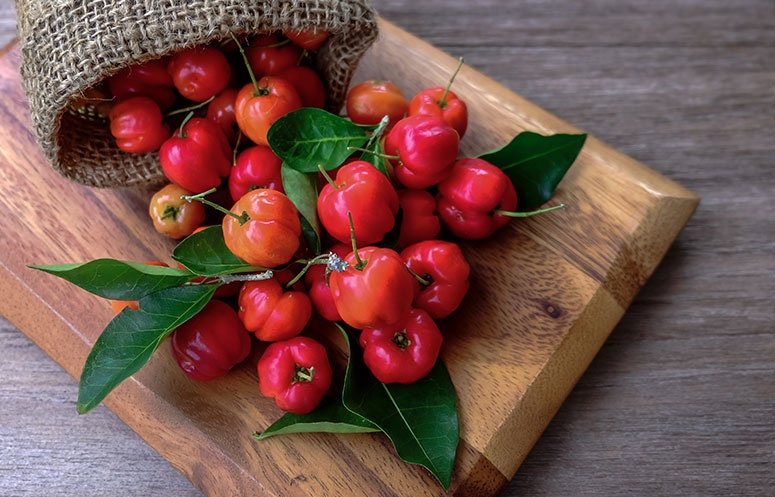
Originally from Central America, the acerola is also cultivated in other (sub)tropical countries and regions today, including Brazil, Western India, Mexico, Peru and the Carribean islands.
Description
The acerola fruit is a stone fruit that grows on the two-to-three-metre-tall acerola bush (Malpighia glabra). Although it is also referred to as the maple or Barbados cherry, it is not related to our European cherry.
Distinctive features
In addition to its unusually high vitamin C content (between 50 and 100 times higher than that of an orange), acerola is also rich in provitamin A as well as vitamins B1 and B6, and is thus an especially valuable ingredient in fruit beverages. In view of this extraordinary combination of healthy ingredients, acerola is assumed to have an antioxidative effect on human cells and the human immune system.
Fruit
The shiny, oval, yellowish-orange to red fruits measuring one to three centimetres in diameter bear a certain resemblance to cherries. Because the pulp of the acerola is very soft, the fruits are processed into puree for fruit juice, marmalade or acerola powder immediately after harvesting.
Flavour
The fruits of the acerola bush are extremely sour and have a slightly “apple-like” aroma.








